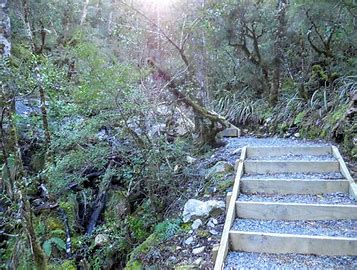Whangarei
17.89°C

Whangarei
17.89°C

Waitakere City
16.98°C

Manukau City
17.11°C

Papakura
24.46°C

Hauraki
17.26°C

Waikato
17.67°C

Matamata
18.46°C

Hamilton
17.51°C

Otorohanga
18.52°C

Rotorua
16.6°C

Taupo
15.44°C

Tauranga
19.27°C

Kawerau
18.6°C

Whakatane
19.64°C

Gisborne
15.51°C

New Plymouth
16.98°C

Stratford
8.97°C

Ruapehu
14°C

Wanganui
17°C

Palmerston North
16.41°C

Wairoa
19.19°C

Hastings
18.84°C

Napier
18.49°C

Masterton
15.49°C

Carterton
15.66°C

Porirua
15.99°C

Lower Hutt
16.45°C

Wellington
15.79°C

Tasman
9.35°C

Nelson
16.27°C

Marlborough
3.22°C

Kaikoura
15.48°C

Christchurch
12.59°C

Ashburton
12.52°C

Timaru
13.37°C

Waitaki
11.32°C

Waimate
13.08°C

Queenstown
12.38°C

Dunedin
14.33°C

Southland
9.98°C

Gore
11.31°C

Invercargill
12.06°C

Blenheim
14.73°C

Te Anau
27.35°C

Wanaka
11.17°C

Kaikoura
13.38°C

Stratford
13.54°C

Upper Hutt
15.9°C

About
This walk is through some of the best native forest in the Bay of Islands. It takes you from Broadview Road, Opua down through a pretty valley to join the Paihia to Opua walkway. The forest here has never been milled or burned.
A feature of the walk is the number of large, old native puriri trees to be seen (vitex lucens). This tree can grow to about 20m in height and has a stout trunk and a spreading canopy of glossy green leaves. It is related to the teak and its very hard, dark red-brown timber was popular with early settlers for railway sleepers, fence posts, house piles and bridges.
It is said to be New Zealand’s strongest wood and was so hard to split that timber workers often resorted to dynamite. Its timber can be spoiled by the puriri moth, a large green moth whose larvae drive holes into the growing wood.
Maori have used infusions of puriri leaves to bathe muscular aches and sprains and as a remedy for sore throats and ulcers.
